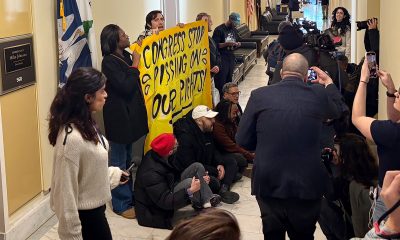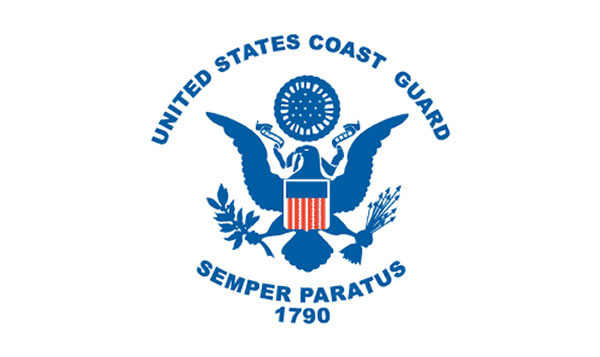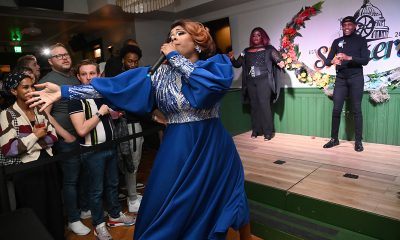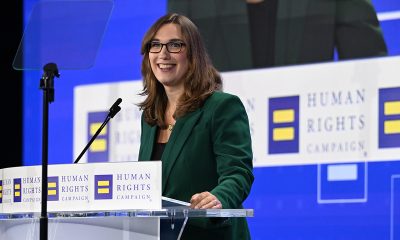Opinions
CPAC attack on trans rights is a pathway to authoritarian gov’t
Speaker advocated eliminating ‘transgenderism’
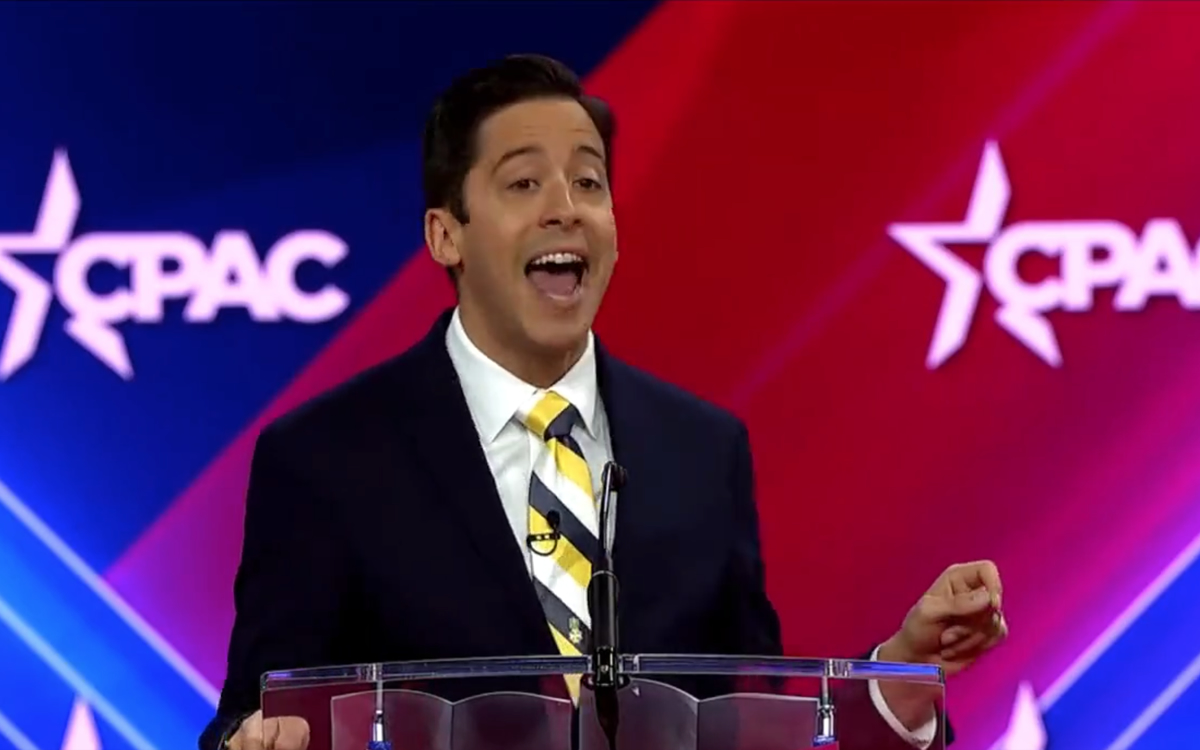
Earlier this month, activists and thought leaders from across the country met in Maryland for the annual Conservative Political Action Conference, commonly called CPAC. Speakers and presenters from all walks of conservative life, including former President Donald Trump, Rep. Marjorie Taylor Greene, and former Brazillian President Jair Bolsonaro, met across several days and spoke on a multitude of issues impacting conservatism today.
One of them, a commentator and host with The Daily Wire named Michael Knowles, plunged the audience head-first into the culture war. Speaking to a crowd, he said, “for the good of society […] transgenderism must be eradicated from public life entirely — the whole preposterous ideology, at every level.”
Shortly after Knowles’ speech, social media lit up, and prominent advocates for the trans community and several media outlets criticized him for wanting to eradicate the transgender community. Knowles denies these claims and has called on media outlets to retract articles stating as such. Meanwhile, conservatives supportive of Knowles and transgender individuals have fought over the overarching meaning of eradicating “transgenderism” from public life.
So what is “transgenderism,” and does it truthfully differ from transgender people? Above all else, why does this language matter so intensely?
The term “transgenderism” is not a formal medical category or classification. The phrase for transgender people has evolved over the years to include such words as transsexual and gender dysphoria, but never “transgenderism.”
It’s also not a social term actively embraced by most—if virtually any—recent transgender individuals due to its implicit politicization. Transgender history is full of stories detailing identity and self-discovery, many erratically spread across books, zines, and personal stories. For those instances where the term “transgenderism” does appear, it is significantly more descriptive. For example, in the 1994 text “Transgender Nation” by Gordene Olga MacKenzie, “transgenderism” acts as a term similar to how homosexuality is applied to the gay and lesbian community and encompasses the general state of being a person who is transgender.
Meanwhile, a simple Google Books search from the past several years using the phrase yields a plethora of charged texts, many of them highly critical of legal and social advancements made by the trans community — and occasionally critical of transgender individuals themselves. Often, these texts portray “transgenderism” as a deliberate ideology akin to how one voluntarily upholds conservatism or libertarianism. In another literary example, the 2020 text 2+2=5: How Transgenderism is Redefining Reality by Katie Roche, the term is frequently used as a broad catch-all, including pursuing affirming medical care, publically expressing your identity, and even accessing other transgender individuals in the broader world for the sake of a sense of community.
So when Knowles says he wants the eradication of “transgenderism” yet bristles when people say that means transgender people, he is making a distinction without a difference.
Since 2015, the phrase has slowly grown in popularity, with Google Trends showing an increase in its overall consistency—incidentally coinciding with the Obergefell v. Hodges decision and the beginning of the “bathroom bill” discourse. For social conservatives, the phrase has gradually taken life to strike at the heart of identity itself. From changing your legal name and amending your birth certificate to openly respecting and honoring the individuality of others, it seeks to subsume any action or concept seemingly legitimizing transgender identities in public life.
Simply stated, everything that validates the dignity and conceptual existence of a trans person is inherent in so-called “transgenderism.” It’s irresponsible not to acknowledge the colloquial use of the phrase in conservative circles. Those concerned are rightfully alarmed when used at a platform such as the CPAC mainstage during a national culture war.
On a recent episode of his show hosted by The Daily Wire, Michael Knowles justified his thinking by stating that the transgender community does not exist. “[W]e ought not to indulge the transgender false anthropology, you know, that, one is a little bit different in that transgender people is not a real ontological category,” he stated, “it’s a euphemism to describe deeply confused men and women who ought to have psychological and spiritual help.”
While everyone should take notice of these words, conservatives and proponents of a smaller government should particularly be alarmed by this way of thinking and specific use of language. Such reasoning relies on the concept that transgender people are not a real group of people—something transgender people and their families would find disagreeable—therefore, it’s not an identity to suppress but rather a social and mental deviancy to fix. To that end, all cultural development and social actions openly validating a trans person in any form encourage that deviancy and are part of the broader scope of “transgenderism” seen in public life.
When juxtaposed with his overarching philosophy, his statement should perturb those who value the principles of tolerance and uphold the principles of limited government as it applies to government intrusion into individual identities. Moreover, it would require a degree of regression beyond the scope of the push for basic LGBTQ tolerance from several decades ago, let alone the acceptance earned in the past ten years. Such a regression would imply a society that has removed or withdrawn from all forms of social recognition, medical advancements, and institutional pathways that allow someone to transition and be what is regarded in modern culture as a transgender person.
And suppose you are someone who has gender dysphoria or otherwise feels your gender identity is incongruent with what was understood at the time of your birth. In such a society, your neighbor should not respect or acknowledge you as you are but rather pity you for being mentally unwell until you one day believe with as much sincerity as them that your concept of self is wrong.
What exactly happens when minds don’t change, or individuals inevitably refuse to hold malice against their neighbors in this hypothetical society, has yet to be examined. What is known, however, is that efforts to force someone out of their identity are not well received. For example, a 2019 study published in the Journal of the American Medical Association found that “lifetime exposure to [gender identity change efforts] was significantly associated with multiple adverse outcomes, including severe psychological distress during the previous month and lifetime suicide attempts.”
With political conservatives straining under the weight of a national culture war, allowing this form of speech to reverberate without context is a reckless pathway to a more authoritarian government. It denies the antagonistic usage of the phrase and perpetuates a misnomer. Moreover, it denigrates transgender individuals in alarming words and betrays the values of conservatives and libertarians who preach tolerance and freedom from state suppression.
Jordan Willow Evans is a policy analyst and writer living in Goffstown, N.H. She is chair of the Libertarian Policy Foundation and treasurer of MassEquality, the leading Massachusetts statewide queer organization.

For years, the far right has relied on a familiar infrastructure to wage its political battles: coordinated legal networks, back-channeled money, and an ever-growing pipeline of model legislation that moves quietly from one statehouse to another. What used to be a fringe ecosystem of activist lawyers has matured into something far more muscular. Today, the attacks on LGBTQ Americans—especially transgender people—are not random. They are designed, drafted, and deployed by a disciplined constellation of groups that understand how to move legislation with precision. And if Democrats, civil rights advocates, and national LGBTQ organizations continue treating each bill as an isolated outrage rather than a unified offensive, this machine will keep outpacing them.
Most Americans have never heard of outfits like the Alliance Defending Freedom, the American Principles Project, the Leadership Institute’s law arm, or the network of state-based policy shops that orbit the Heritage Foundation. But these entities now function as the shadow authors of state legislation. The anti-trans sports bans that appeared in more than 20 states did not arise organically; they were cloned from drafts circulated by ADF attorneys. The same is true for bills restricting gender-affirming care, limiting name and pronoun accommodations in schools, or expanding “religious liberty” carve-outs that allow discrimination against LGBTQ employees or customers. Legislators often change a few words, swap in a local sponsor, and reintroduce the same provisions session after session — giving the impression of momentum when, in reality, only a handful of ideologues are writing the nation’s culture-war script.
The operational model is simple: produce a bill, partner with a state-level think tank, recruit a legislator to introduce it, and provide legal testimony to defend it. But the strategic sophistication lies upstream. These groups have spent years cultivating relationships with attorneys general, state solicitors, and conservative judges who are sympathetic to their worldview. They draft legislation with litigation in mind, anticipating which language will survive scrutiny before the federal courts they have worked diligently to remake. They treat policy, politics, and jurisprudence as a seamless ecosystem; meanwhile, LGBTQ advocates are forced to fight on three fronts at once, often with smaller budgets and no comparable network of state-by-state affiliates.
What is most striking now is the acceleration. Bills that used to be test-driven in one or two states are being introduced in a dozen simultaneously. After the Supreme Court’s Dobbs decision, the same legal strategists pushing abortion bans pivoted almost immediately toward restricting trans health care, framing puberty blockers and hormone therapy as “sterilization.” The rhetorical shift was not accidental. It was a deliberate legal construction designed to open the door to future Fourteenth Amendment challenges, should the movement secure a case capable of reaching the Supreme Court. This is not simply a legislative fight; it is the groundwork for long-term judicial warfare.
And yet, Democrats and even national LGBTQ groups often treat these measures as if they were spontaneous outbursts of local prejudice. That is politically naïve. The reason similar bills appear in Idaho, Florida, Tennessee, Kansas, and Ohio at the same time is because they originate from the same set of PDFs stored on the same servers belonging to the same legal networks. The far right has embraced an industrial model of anti-LGBTQ policymaking: mass production, rapid deployment, and coordinated amplification by media channels that echo the same talking points across state lines.
The consequence is that the burden falls on queer people themselves—especially trans people—to respond to an avalanche of bills, hearings, lawsuits, and administrative changes that no individual or small advocacy team can fully track. When you have a network of attorneys feeding language to legislators, drafting amicus briefs, and preparing future litigation strategies in advance, you create an asymmetry that is difficult to counter with reactive press releases or one-off legal challenges. This imbalance of power is not about public opinion, which still supports LGBTQ equality by wide margins. It is about institutional positioning. The far right has placed its lawyers where the pressure points are: in state AG offices, in coordinated legislative caucuses, in judicial clerkships, and in the nonprofit legal trenches where issue fights are shaped long before the public hears about them.
There is a path forward, but it requires abandoning the old model of treating each bill as a separate emergency. LGBTQ organizations need a unified, long-range strategy that mirrors the discipline of the groups attacking them. That means state-by-state legal surveillance, rapid drafting of counter-model legislation, formal partnerships with progressive state AGs, and a standing litigation coalition capable of anticipating—not just responding to—legal threats. It also means investing in local leaders who understand that these bills are symptoms of a national machine, not quirks of their hometown politics.
What’s at stake here is nothing less than the architecture of civil rights in the United States. The far right is attempting to rewrite the legal landscape through volume and repetition, hoping courts will eventually treat these contrived bills as reflections of a shifting national consensus. They are betting that if they introduce enough legislation, in enough states, for enough years, the judiciary will reinterpret LGBTQ equality not as a settled constitutional principle but as a contested social question that can be narrowed or rolled back. Their ultimate goal is not just to restrict trans rights today but to lay the doctrinal groundwork for limiting LGBTQ protections for a generation.
The community can still win this fight, but only if it sees the battlefield clearly. These bills are not local skirmishes—they are coordinated acts of legal engineering. And it is time the pro-equality movement built an equally coordinated system to match them.
Isaac Amend is a writer based in the D.C. area. He is a transgender man and was featured in National Geographic’s ‘Gender Revolution’ documentary. He serves on the board of the LGBT Democrats of Virginia. Contact him on Instagram at @isaacamend
Opinions
Everything is Everything
Transformer’s 21st Annual Benefit Art Auction & Gala at the LINE DC November 19, 2025
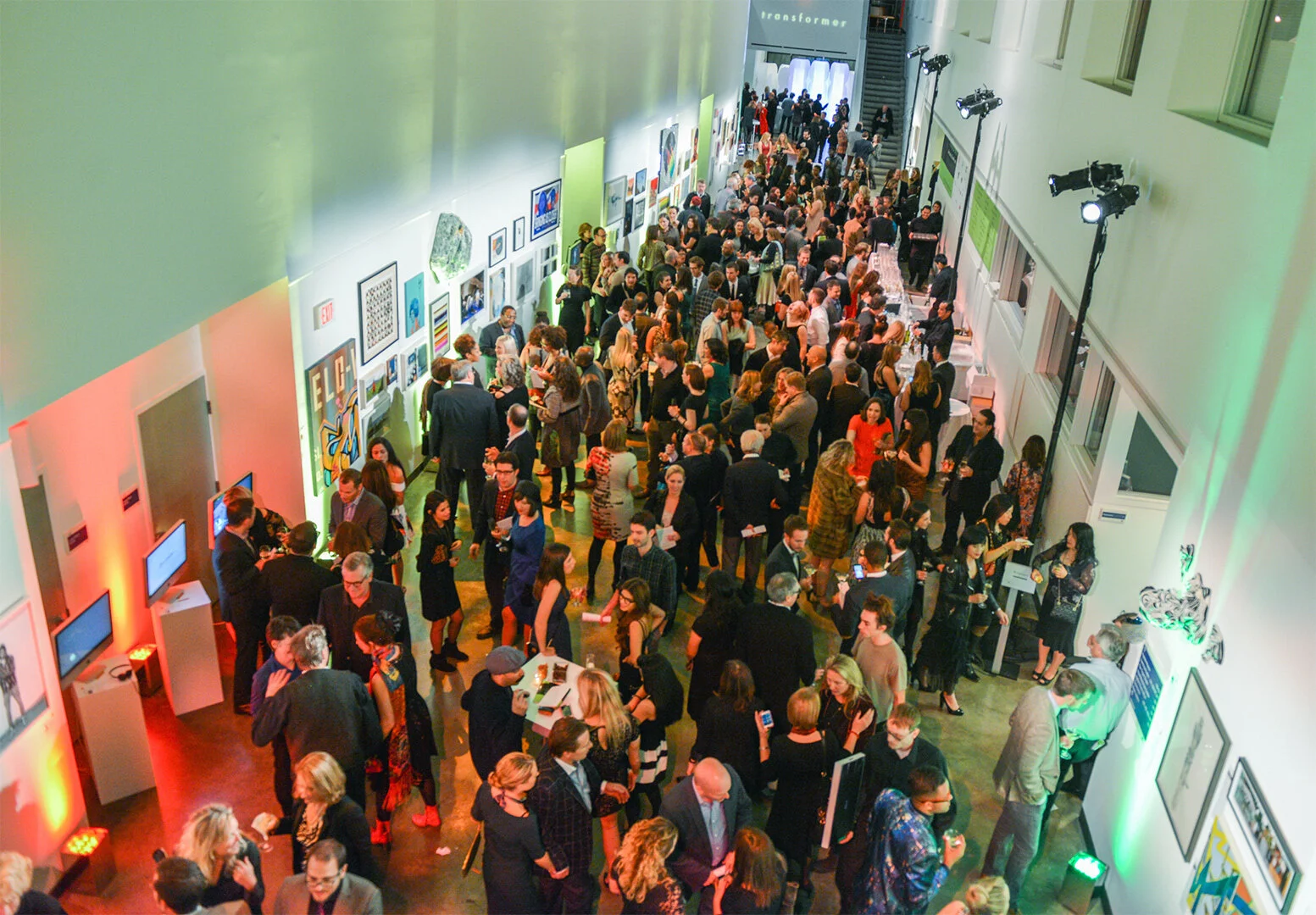
In Washington, DC, art has never existed in isolation—it thrives where people gather and create. Art isn’t an accessory to the city’s identity—it’s foundational to it. This city was designed by artists, built by craftsmen, and has been continuously shaped by creative vision for more than two centuries. While other American cities grew organically around commerce or geography, Washington was imagined first, drawn by hand, and constructed as a deliberate artistic expression of democratic ideals. The result is a living gallery where public art doesn’t just reflect our history; it actively shapes how we understand citizenship, memory, and identity.
For 23 years, Transformer has been a cornerstone of DC’s contemporary art scene, committed to uplifting emerging and underrepresented artists who challenge boundaries and engage audiences with new experimental artistic concepts. On November 22, 2025, Transformer will host Everything is Everything, our 21st Annual Benefit Art Auction & Gala at the LINE DC, a night dedicated to celebrating the power of connection through art, performance, and community.
Everything is Everything is an extension of our non-profit organization’s cutting-edge vision, bringing together artists across different mediums, aesthetics, and walks of life. This philosophy embraces interconnectedness: where art, identity, and community are a part of the same living fabric. The gala brings together hundreds of people to celebrate art & artists, featuring over 140+ artworks in a public exhibition available for silent bidding. Guests also enjoy our innovative Artist Activated Experiences Lounge, featuring immersive installations by DC based queer artists Bumper, Katie Magician, Div0id, JaxKnife Complex, Stitches DC, Hennessey and Kunj.
In a time when queer and drag performers face renewed cultural and legislative attacks, Everything is Everything affirms that freedom of expression is not optional—it’s essential. Our “Celebration of DC Club Kids” pays tribute to DC’s legendary Club Kids and nightlife culture—those radiant spaces that have long nurtured queer creativity, self-expression, and freedom. Produced at the Gala in collaboration with queer artist collective haus of bambi, this performance honors our city’s history while celebrating the diversity and creativity that will continue to shape its future. Everything is Everything culminates in a show-stopping performance by iconic New York City based performance artist, cabaret singer, and drag artist Joey Arias.
As Transformer’s Everything is Everything Gala Committee, we’ve experienced firsthand how artists in DC transform spaces, challenge norms, and build community. The Gala is a celebration of that creativity and resilience. It is also a crucial act of support: proceeds from the Everything is Everything Benefit Art Auction & Gala directly supports artists while sustaining Transformer’s year-round exhibitions and programs that elevate emerging artists and arts leaders within DC and beyond. In doing so, Everything is Everything ensures that experimental and inclusive artistic practice, particularly of queer, trans, and BIPOC artists, continues to thrive.
Because in DC, art isn’t just something we look at—it’s something we live, share, and fight to protect.
Purchase tickets to Everything is Everything, Transformer’s Annual Benefit Art Auction & Gala at onecau.se/everythingiseverything. Learn more about Transformer’s mission at www.transformerdc.org.
- Transformer’s Everything is Everything Gala Committee: Allana D’Amico, Sondra Fein, Theresa Nielson, Jennifer Sakai, Christopher Addison, Monica Alford, Samantha Dean, Samira Farmer, Carole Feld, Celina Gerbic, Ally Helmers, Allison Marvin, Marissa McBride, Tom Noll, Crystal Patterson, Victoria Reis, Dorothy Stein, Emily Strulson, Gregg Tourville, José Alberto Uclés, and Hanna Thompson
Opinions
MTG should keep up the pressure on Trump, MAGA
Unexpected flip a welcome sign of GOP resistance
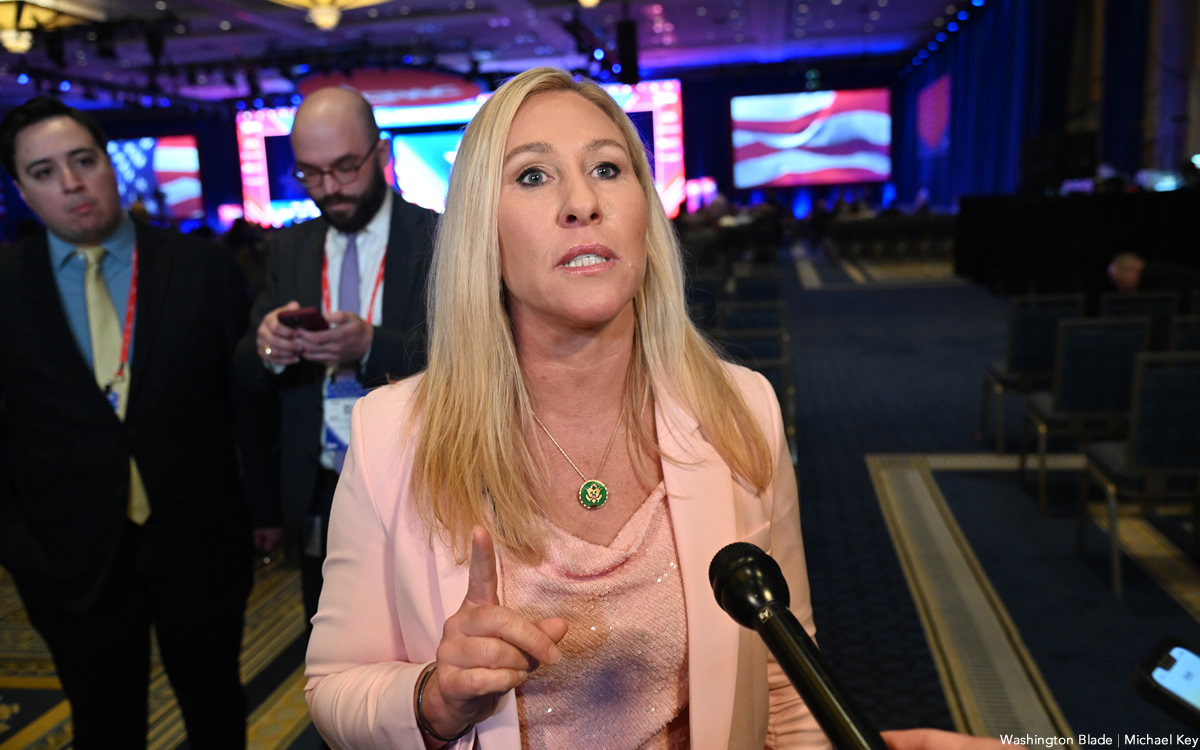
If the first time you ever saw, or heard, Rep. Marjorie Taylor Greene (R-Ga.), was when she appeared on “The View,” you could be forgiven if you thought what an intelligent, rational, woman she is. If it wasn’t the first time you saw her, you just wondered what happened to the wacko you thought you knew.
Marjorie Taylor Greene has stood up for the women who were the victims of Jeffrey Epstein and his friends. She was one of the 218 who signed on to bring the bill to release the files to a vote in the House. I think the vote will be more lopsided than people think, getting many more Republicans. After it passes the House, it will go to the Senate, and if it passes there, to the felon, for him to decide — will he sign it or veto it?
Greene has also spoken out and criticized the Republican Party for not agreeing to extend the tax credits for the ACA, to ensure the cost of insurance premiums remain at least affordable for most. Again, we all had to wonder what happened to the real MTG, the non-repentant Trumper. This version of Greene has driven the president to an apoplectic state. He has given her a new nickname, and accused her of betraying the entire Republican Party. These are quotes from Trump on social media last Saturday: He called her the “Lightweight Congresswoman Marjorie Taylor Brown (Green grass turns brown when it begins to ROT!),” based on what she said. He accused her of turning left, and according to him “performed poorly on the pathetic View, and became the RINO that we all know she always was. Just another fake politician, no different than Rand Paul Jr. (Thomas Massie), who got caught being a full-fledged Republican In Name Only (RINO)! MAKE AMERICA GREAT AGAIN!!!.”
Although I support what Greene is saying on these two issues we shouldn’t forget Greene is the woman who said, “joining the military is “ like throwing your life away” while discussing the U.S. withdrawal from Afghanistan on Fox News. She also said regarding two July 4th incidents in which seven people were fatally shot at an Independence Day parade in Highland Park, Illinois, and two police officers were gunned down in Philadelphia, “Two shootings on July 4: One in a rich white neighborhood and the other at a fireworks display. It almost sounds like it’s designed to persuade Republicans to go along with more gun control.” Then when talking about the Jan. 6, 2021, attack on the Capitol, in which hundreds of Trump supporters stormed the building to stop certification of the presidential election results, she called it “a little riot.” Very bizarre. We are all definitely living in Trump’s alternate universe.
I think the thing that bothers the felon the most is Greene’s insistence the Epstein files be released. It is interesting there is nothing yet public that implicates Trump in actively participating in any pedophilia with Epstein. Some of the released emails do implicate him in knowing what Epstein was doing, but not speaking out about it. But what is making the felon in the White House apparently hysterical, and fighting so hard, to keep the Epstein files from the public? What does he know is in them, that we don’t? He has tried every distraction to move this off the front-page including bombing Venezuelan ships he claims are carrying drugs, without any proof, and threatening a land war against Venezuela. Since that hasn’t worked, he is having his AG, his lapdog, Pam Bondi, have a prosecutor look at only what Democrats could be involved in the Epstein scandal, clearly hoping if there is an active investigation it could keep the files away from the public, possibly for years.
Because of the recent election results, the felon is backtracking on the tariffs he said were so important, and a huge positive, for the United States. Those results clearly showed the people are blaming him, and the Republican Party, for the rising prices. Even to a clueless, evil, human being like him, it has become clear the tariffs are making life worse for the American people.
So, I say to Marjorie Taylor Greene: Stay this new course you are on. Keep up the work attacking the felon, and Republicans who are going along with him. Know that even those of us who think you are a wacko, thank you.
Peter Rosenstein is a longtime LGBTQ rights and Democratic Party activist.
-

 District of Columbia5 days ago
District of Columbia5 days agoD.C. LGBTQ bars ‘hanging in there’ amid tough economy
-

 District of Columbia3 days ago
District of Columbia3 days agoNew LGBTQ bar Rush set to debut
-

 National5 days ago
National5 days ago213 House members ask Speaker Johnson to condemn anti-trans rhetoric
-

 Virginia4 days ago
Virginia4 days agoRepealing marriage amendment among Va. House Democrats’ 2026 legislative priorities



